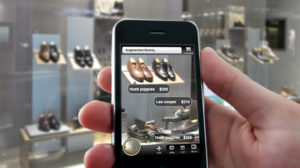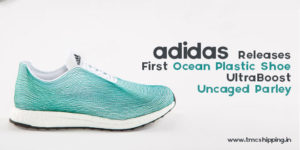There is one thing you can be sure of: the technology of tomorrow will be even more pervasive and invasive than it is today, and of course increasingly essential also to consumers interested in products from the fashion industry. We already see it today: armed with their smartphones, customers enter our stores, taking pictures of the garments on display and comparing them with those belonging to the real and virtual stores of the competition. They then share images of their favourites with friends, while posting their comments on the goods purchased and services received, requesting also post-sales

services like newsletters, discounts, and ads…
In the future, the division between online and offline sales channels will become even more blurred, thanks to smart technologies, which will be excellent allies also and above to all to the fashion industry, with proximity technologies, which are the next generation after QR codes, allowing for the transmission/collection of wireless data… Existing examples of this include the NFC – Near Field Communication used in the footwear of the Italian brand Fabi, which guarantees the authenticity of the product and easy access to the brand’s e-commerce site, while also acting as a deterrent to theft. American Eagle, instead, uses iBeacon technology to connect ‘clicked on’ products to coupons and other discounts. 
VR- Virtual reality and AR-Augmented Reality will also be increasingly important to the promotion of garments and fashion accessories. For now, transforming the purchasing experience into a game is limited to the “gamification” of shopping (an example of this is Alibaba and its invitation to “catch a cat”, during the Single Day 2016 – imitating the more popular Pokémon-go). These technologies have an enormous appeal to consumers and their development is destined to be just as extraordinary as the introduction of the Internet was in the past. So, it comes as no surprise that they are coherent with what is the first demand of the consumer: transforming shopping into a genuine experience. 
Even Artificial Intelligence will have significant developments and interesting applications: digital virtual assistants already abound–everyone, in fact, is familiar with Window 10’s Cortana for example, but there are also those of Google and Amazon and soon even that of Facebook – which will take action in our stead, supported by voice and visual recognition systems. In the future, there might even be virtual assistants for the fashion industry, who will accompany us when shopping in real stores or on e-commerce sites…
The other important area of interest to consumers is that of environmental and social sustainability, which is more important than ever before especially among the Millennials (born between the end of the Seventies and 2000) and the younger Z Generation (born between 1995 and 2010). Fashion brands and companies that will focus their efforts on these issues, while actively involving consumers (maybe by creating a community where it is possible to discuss progress being made on certain initiatives), will create a solid rapport of trust with them. However, it is important to avoid deceptive greenwashing practices: the boomerang effect could be devastating… in fact, with just a simple click; comments that might compromise the reputation of the brand could be posted. 
The recommendation for businesses belonging to the fashion and footwear industries is to develop environmentally friendly and/or natural/recycled products, with non-polluting processes, connections to environmental/charitable initiatives, best business practices, and an absence of child labour/worker exploitation, etc.… these will all be convincing arguments for consumers, provided that they are not just empty declarations meant for show and are actually backed by an effective communication campaign.

In this context, a prime example of how it should be done is Adidas: in reply to the Greenpeace “Ocean of plastic” campaign meant to raise environmental awareness about the pollution of the world’s oceans, the sports brand launched its UltraBoost sneaker made from recycled ocean plastic waste, claiming that “As a global brand, we are responsible for making the world a better place”.
The human factor is the most unpredictable of the three elements to be analysed, but it is essential to outlining future consumer trends, also in the fashion industry.
Consumers want to be looked upon as individuals and not just categories: they will accordingly increasingly demand personalized products and a genuine shopping experience. They love being involved by online and offline stories, they love exploring the possibility for interaction, and they want to have their say on a product and service, while also belonging to a community of people with their same tastes and passions. They are looking for tailor made products, like the O Bag, which allows them to create their very own models by assembling their favourite parts; or handmade shoes from the Italian website designitalianshoes.com that allows them to choose the design, shape, leathers, and colours… in other words, a democratic kind of luxury is made available to consumers… Moreover, there is a desire is to be engaged by proximity technologies that connect to their smartphones, inviting them to come into the store with targeted advertising, or they are interested in smartshoes like iFit and Altra, which collect biometric data when they run, or even subscription services that automatically appear with products, services… 
Categories like senior citizens will be increasingly important (a fourth of the world’s population is over the age of 50): they will work until a later age, living longer lives, while also asking to be looked upon as youthful with access to “youthful” products. Categories like those that are “oversized” will proudly demand to not be treated any differently, with the same access to the same products and services as the rest of the population. Moreover, handicapped consumers and other niche categories will demand similar treatment. Additionally, there will no longer be a distinction between genders, since there is an increasing demand for a-gender products, above all among the younger generations: a trend that we have seen aggressively reconfirmed also in footwear.

Fashion brands will accordingly be able to effectively influence and use to their advantage sentiments like authenticity, truthfulness, and transparency, in order to create and reinforce rapports of trust with consumers. However, at the same time, they must be capable of offering guarantees like safety and privacy in a digital world where these requirements seem to have been completely compromised…
Well-being will be another hot topic for consumers: eating and drinking well, staying in shape, and good living are all part of the athleisure style, which will increasingly influence the world of fashion, continuing to represent also an enormous opportunity for the footwear industry.



